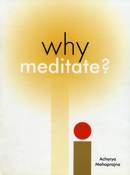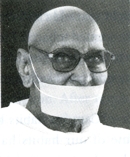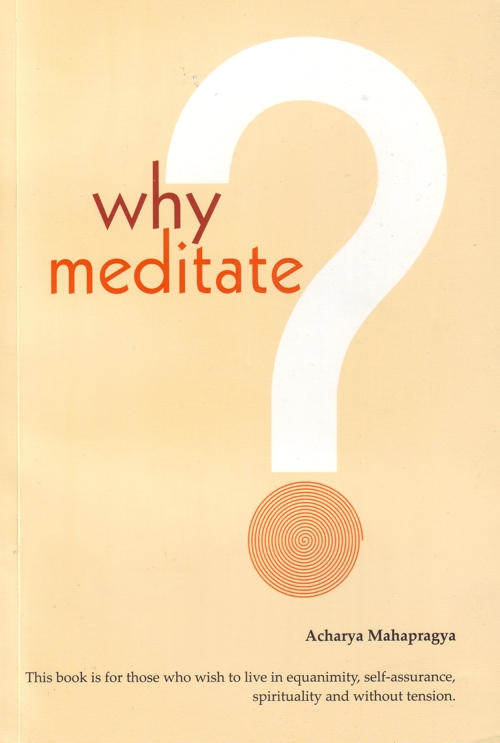
 A man came along with his son to me and said, "Gurudev! Please make my son understand that he should become a good person. His habits are not good." The father wants his son to change his habits. Many a time, we come across contexts where a son wants his father to drop some of his habits. Why, just today, I have a family in front of me. A seven-to-eight year old child said, "My father is highly addicted to intoxicants like scented tobacco. Please ask him to quit it." In this case, the son wants to change the habits of his father so that his father can become healthy and good samskars or habits can spread within the family.
A man came along with his son to me and said, "Gurudev! Please make my son understand that he should become a good person. His habits are not good." The father wants his son to change his habits. Many a time, we come across contexts where a son wants his father to drop some of his habits. Why, just today, I have a family in front of me. A seven-to-eight year old child said, "My father is highly addicted to intoxicants like scented tobacco. Please ask him to quit it." In this case, the son wants to change the habits of his father so that his father can become healthy and good samskars or habits can spread within the family.
The questions before us are, "Can our habits be changed? Can we change our nature?" Some of our habits have existed since time immemorial, while others have been acquired. Man even acquires those habits, which were not present earlier. Is it feasible to change all these? A poet has said, �One cannot change one's nature by mere preaching.� The poet has taken the example of water, whose nature is cool. Even if we boil it to its zenith, try to make it as hot as fire, even then it cannot give up its inherent characteristic of coolness. If you pour this boiling hot water on fire, it will not fuel the fire like ghee (clarified butter), but will put the fire out. It is difficult to change one's intrinsic nature. Bitterness is the nature of neem. It will not become sweet even if the plant is watered with ghee and jaggery.
So, on the one hand, we have the statement, �Nature cannot be changed� while on the other hand, we face increasing demands to change our nature. If we study both these contexts, we can conclude that nature can be changed, provided all the necessary tools and practices are available. Change of nature by mere preaching is impossible.
Let us discuss this issue based on the karmic Philosophy. Where does our nature form? Where does our temperament dwell? Where do our habits reside? Are they in the physical body or in the subtle body? Unless the vibrations from our subtle body influence our habits, deeply formed habits cannot be created. Our habits are made firm by the support of the subtle body.
Where should we then change? Should we effect a change in this physical (gross) body or in the brain? This subject has been discussed at length in Preksha Mediation. After much deliberation, a term has been coined, which we can rephrase in scientific terminology as feedback mechanism. This process of feedback helps us to change our nature. Take, for example, when a man is fasting, the effect of this fasting is seen on the physical body. As per the principle of karma, a man who does fasting breaks the bondages of his karma. He purifies his karma. The shedding of karma is called nirjara. However, we know that karma does not exist in the physical body. It resides in the karmic body, which is the subtlest body. The bondages of karma are broken in the karmic body, while fasting has been done in the physical body! How is this possible? This is indeed an unusual query. To break the bondages of karma, all our purification techniques like meditation, tasting or self-introspection are performed by the physical body but their consequences, in the form of shedding of karmas, occur in the subtlest body.
A famous saying of Acharang Sutra [one of the oldest Jain canons] is, �Vibrate the karmic body�. Unless and until the karmic body vibrates, the physical body will not vibrate, and hence, one cannot be rid of one's habits. We have to go from the physical body to the subtlest body. This is the process of the feedback mechanism. The physical body does the fasting and also experiences suffering, but the breaking of bondages & purification occur in the subtlest body [karmic body]. Isn't this amazing? The gross body is the feedback. The vibrations of the physical body affect the subtlest body and the vibrations of the subtlest body affect the physical body. Both are inter-related. There is reciprocity between the two. The phenomenon that takes place in the physical body has its result on the karmic body [subtlest body] and, in turn, the vibrations of the karmic body have their impact on the physical body. Without understanding their inter-relationship, it is not possible to understand the process of changing one's nature. Where will our nature change? The change will occur in the karmic body. This change would manifest in the physical body resulting in a change of habits.
The question is: How is this possible? How do we stimulate/vibrate our karmic body? The practice of Preksha Meditation is a technique to take us to the karmic body.
A man is practicing the perception of breath. Breathing is linked with our gross body. The consciousness, which is watching, is also present in the gross body. All our activities are undertaken in our physical body. We are observing our breath but the subtle vibrations created by this practice of observation reach our karmic body and relieve us from karmic bondages. Without understanding this concept, we cannot in any way define the process of purification. The various practices of Preksha Meditation, including perception of breath, perception of body, perception of psychic centers, perception of colour meditation and relaxation (kayotsarga), are practiced in the physical body but their deep impact is experienced in the karmic body. Our world is full of vibrations. One who understands the theory of vibrations can understand this entire process very easily.
A man resolves to complete a task in 10 minutes. Along with his resolution, the subtle vibrations and sensations are triggered. As he performs his various activities, a day will eventually come when he identifies so strongly with his resolve that the resolve culminates by turning into reality. The man thus becomes whatever he wanted. When is this shape formed? It is formed after the process of complete identification with the resolve. It starts off as vibrations, and as these vibrations build up, a time comes when reality takes the shape of our thoughts.
 Acharya Mahaprajna
Acharya Mahaprajna
 Copyright by Acharya Mahaprajna ©2005
Copyright by Acharya Mahaprajna ©2005